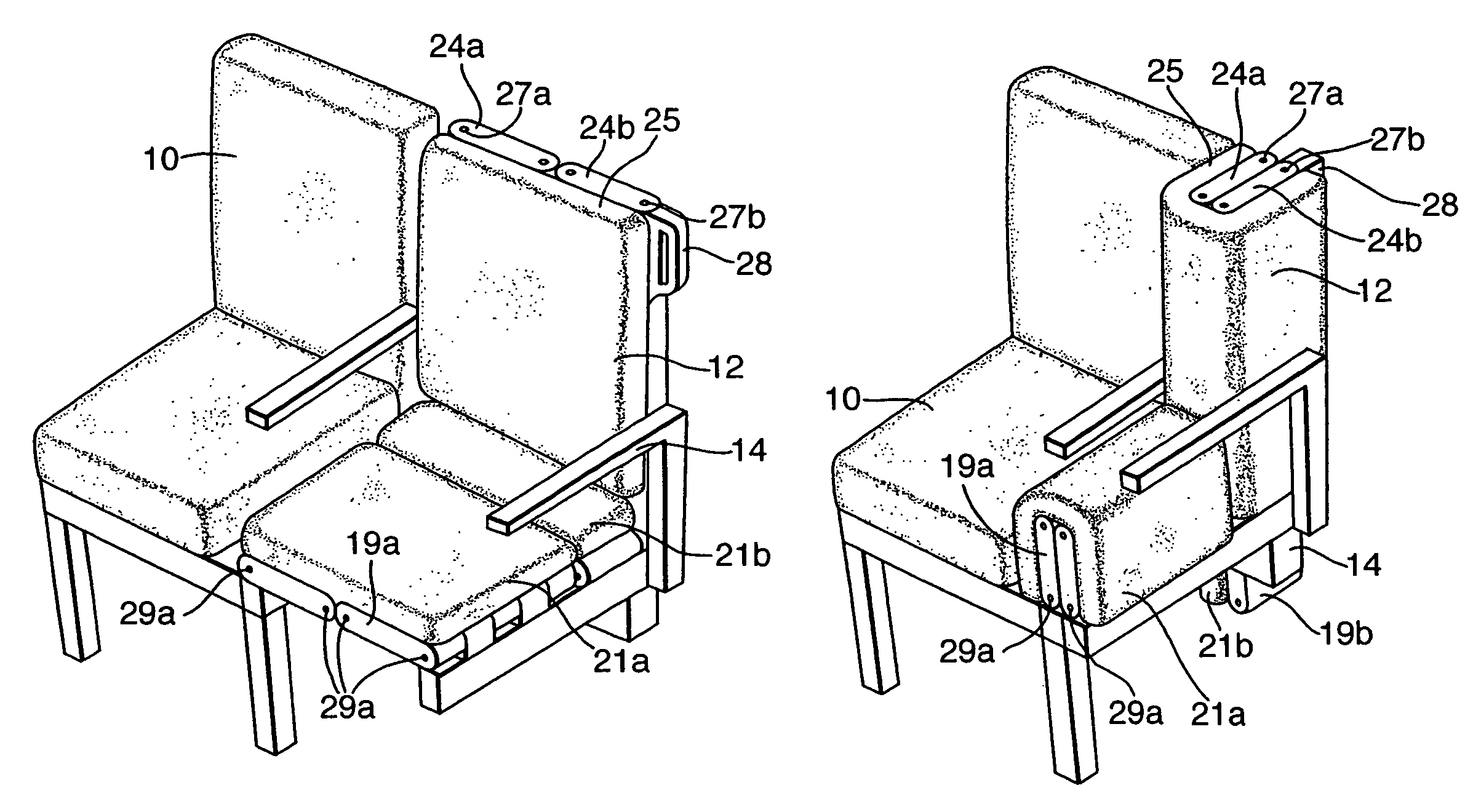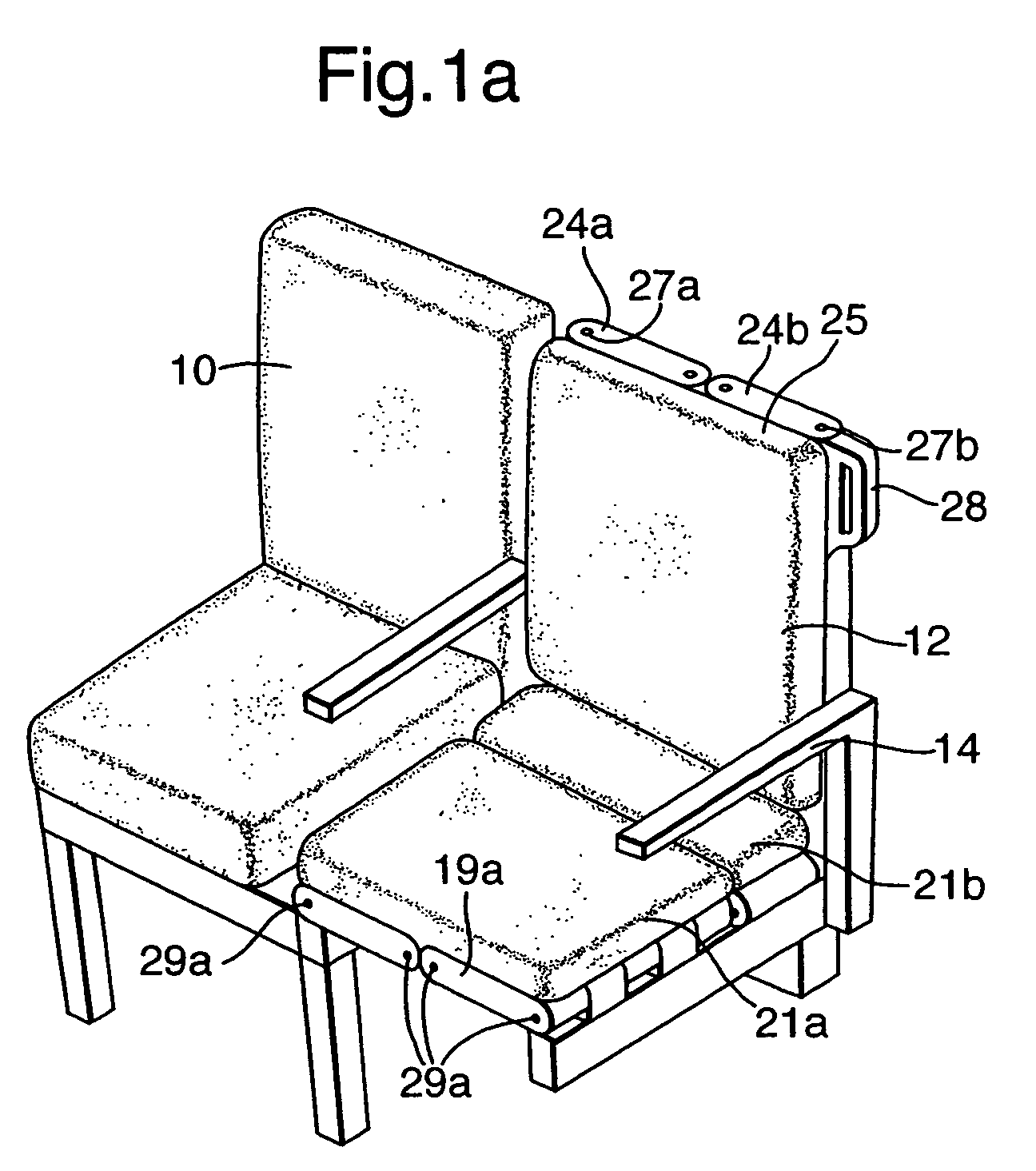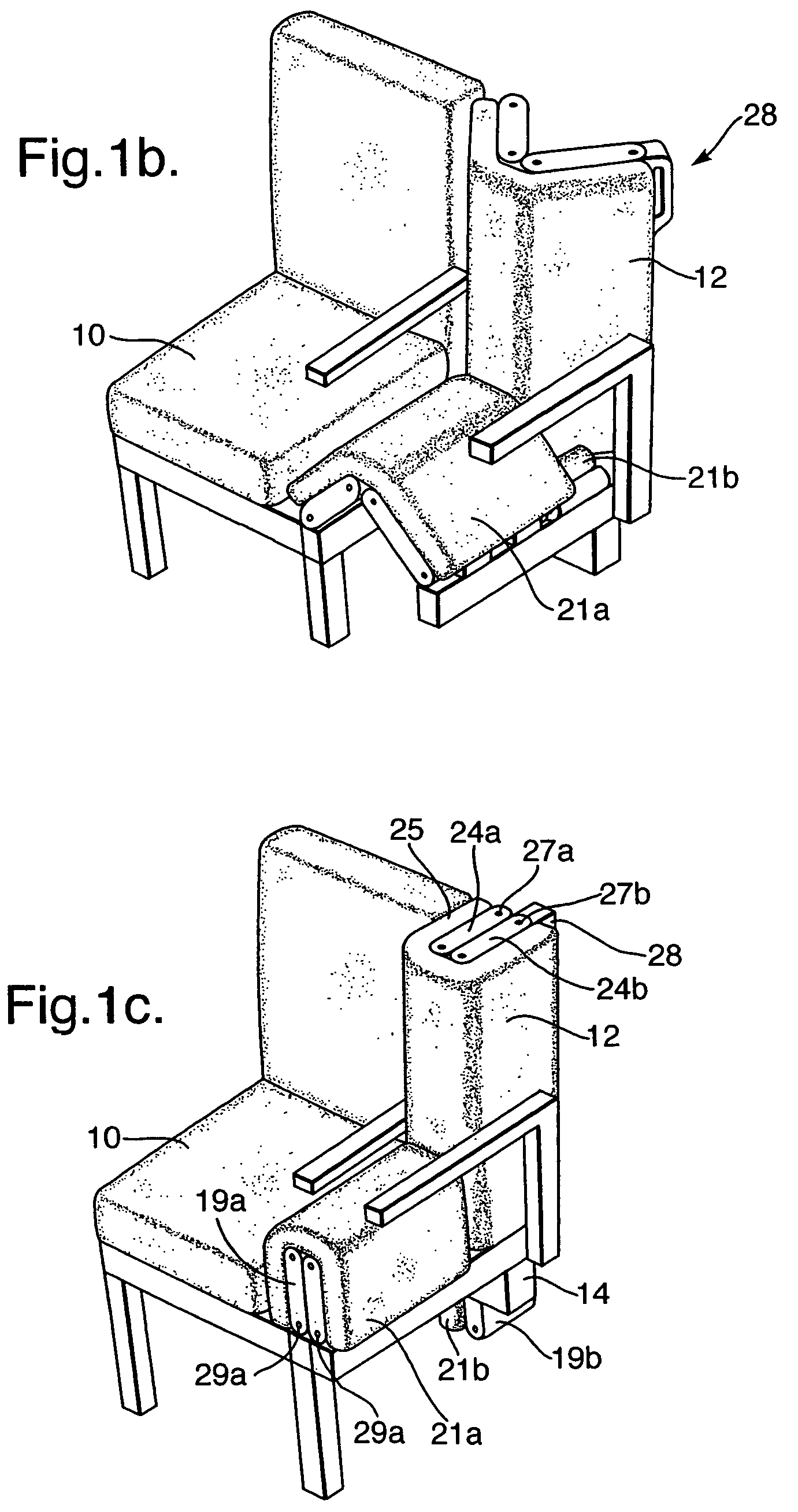Aircraft seat assembly
a seat and aircraft technology, applied in the field of aircraft seat assembly, can solve the problems of significant increase in weight of the seat row, limited aisle widening, and variation in width, so as to achieve the effect of reducing or increasing the width of one or more of the other seats, reducing or widening the aisle spa
- Summary
- Abstract
- Description
- Claims
- Application Information
AI Technical Summary
Benefits of technology
Problems solved by technology
Method used
Image
Examples
first embodiment
[0052]The cushions 21a, 21b and 25 of the aisle seat 12 may each be of one-piece construction and arranged to stretch / deform slightly when folded or may alternatively be of two-piece construction, being split down the fold line (so that no deformation of the cushions is required when collapsing the aisle seat 12). In the first embodiment, the cushions are of one-piece construction and thus deform slightly when folded (despite the apparent two-piece cushion construction that is shown in FIGS. 2a to 2c, which are schematic in nature).
[0053]Other embodiments of the invention will now be described by way of example only. The other embodiments each relate to one or more rows of seats for use in an aircraft seat assembly and are conceptually similar to the first described embodiment in that they share various features. In each embodiment, the row of seats includes at least one convertible aisle seat and one or more other seats, the row being moveable between a first configuration in which...
second embodiment
[0054]FIG. 4 shows a row of seats according to the invention, the row comprising a window seat 108, a middle seat 110, and an aisle seat 112. In this embodiment, the length of the row is variable by means of the aisle seat 112 being arranged to telescope into and out of a seat-shaped cavity in the middle seat 110. The seats are each in the form of a hard plastic moulded seat covered with thin cushioning material (similar to those found on buses or underground transport). The plastic part of the aisle seat 112 is solid plastic. The adjacent seat (the middle seat 110) is larger in thickness, but hollow, thereby defining the cavity in the middle seat in which the aisle seat 112 may be stowed. In this embodiment, the aisle seat 112 is not sprung and thus needs to be manually moved to the desired configuration. However, the length of the row may be reduced by up to substantially the full width of the aisle seat 112. The position of the row of seats shown in FIG. 4 is between the first fu...
third embodiment
[0055]FIG. 5 shows four rows 206 of an aircraft seat assembly of a third embodiment, each row including a window seat 208, a middle seat 210, and an aisle seat 212. Two of the four rows 206 shown are on one side of the aircraft and the other two of the four rows 206 are on the other side, there being an aisle 204 being defined therebetween. All of the seats have a similar shape and are all relatively thin in construction. The aisle seat 212 has a back-rest 224 and a seat base 222 that is rotatably mounted about a horizontal axis 230 lying at or very near to the join between the back-rest 224 and the seat base 222. The aisle seat 212 may be folded by rotating the seat base 222 upwards such that the seat base 222 and back-rest 224 are folded together.
[0056]The aisle seat 212 when in its folded configuration is able to be shifted rearwards to a position in which the seat 212 can then slide in a direction along the length of the row 206 so as to be positioned directly behind the middle ...
PUM
 Login to View More
Login to View More Abstract
Description
Claims
Application Information
 Login to View More
Login to View More - R&D
- Intellectual Property
- Life Sciences
- Materials
- Tech Scout
- Unparalleled Data Quality
- Higher Quality Content
- 60% Fewer Hallucinations
Browse by: Latest US Patents, China's latest patents, Technical Efficacy Thesaurus, Application Domain, Technology Topic, Popular Technical Reports.
© 2025 PatSnap. All rights reserved.Legal|Privacy policy|Modern Slavery Act Transparency Statement|Sitemap|About US| Contact US: help@patsnap.com



